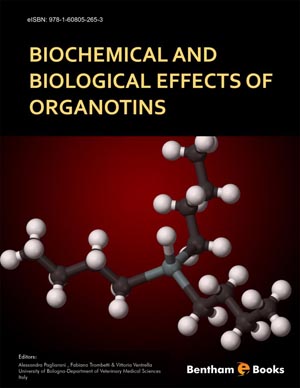Abstract
Most of the biological effects displayed by organotin contaminants, among which trisubsituted species are especially toxic, have increasingly been found to exhibit astonishing analogies in different taxa. While similarities can be perceived from prokaryotes to mammals, different modes and extent of biochemical and biological effects were described in different cells, tissues and species. A broad susceptibility range to organotins emerges from literature. Aquatic biota are mainly affected by organotins as environmental water and sediments act as storage site. Endocrine and lipid homeostasis perturbations span from Mollusks, where first gender changes (imposex) referable to environmental organotin contamination was pointed out, to Mammals, where organotins play the role of environmental obesogens. Organotin immunotoxicity, elicited in various invertebrate Phyla, also affects humans. Inhibition of key membrane-bound enzyme complexes such as Na,K-ATPase and FOF1 complexes, thus affecting hydromineral balance, energy production and related effects, are known to occur in a wide variety of organisms. Mitochondria and all membrane functions apparently represent a preferred target of these lipophilic toxicants. Highly conserved action mechanisms could be involved in the observed effects: organotin binding to nuclear receptors, membrane components and intracellular proteins as well as DNA damage may represent widely shared action modes of these compounds. On the other hand the different response and even the refractoriness to these toxicants shown at different biological levels may mirror biochemical and physiological selectivity of signalling pathways, biomembranes and intracellular protein components.
Keywords: Organotin effects - discrepancies - similarities - animal phyla - toxicity mechanisms






















